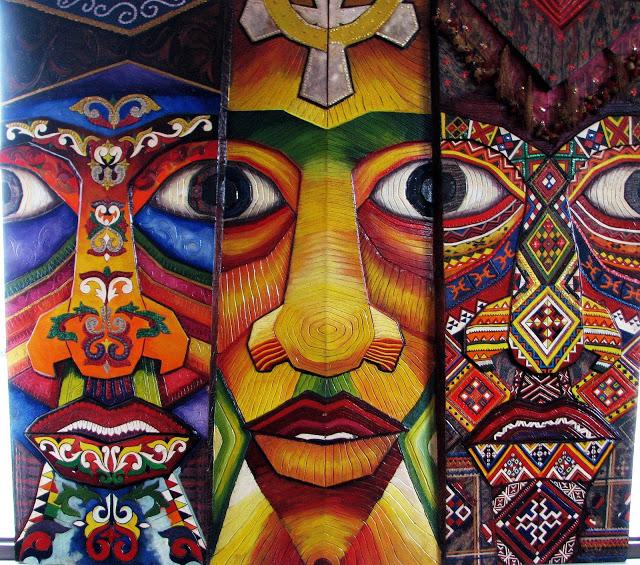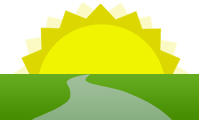
cross-posted from David Bollier's blog
Artists tend to be finely attuned to subtle vibrations of our culture. They hear and see things, and intuitively know what needs to be amplified.Then they come out with creative, sometimes shocking interpretations that often make us realize, “Oh wow, so that’s what I’ve been sensing all this time!” I think that’s one reason for the upswell of artistic works about the commons these days. Something's going on.
This topic is very much on my mind because of ongoing collaborations with a number of American performing artists and cultural workers who see the commons as a template to creating a new future. The group’s members include the Hinterlands and PowerHouse Productions in Detroit, Michigan; the Ethics and the Common Good Project at Hampshire College; the Schumacher Center for a New Economics in Amherst, Massachusetts; Double Edge Theatre in Ashfield, Massachusetts; and the HowlRound Theatre Commons team in Boston.
The Arts, Culture and Commoning working group is interested in using commons-based approaches “to transform the landscape of arts and culture toward equity, abundance, and interdependence as part of a social movement engaged in and in conversation with this urgent moment. Cooperation, collaboration, mutuality, and co-creation bring us together.”
The group recently released a statement explaining its vision and ambitions. One paragraph reads:
“It is our belief that art can and must play a significant role in shaping culture….Art and artists play an important role in helping people process and grieve inevitable collapses of our current systems and institutions in a culture of disempowerment, disconnection, isolation, disembodiment, distraction, and anxiety. Art is a powerful antidote as a force for social cohesion, embodiment, sustainability, and mutuality. Art catalyzes imagination, creativity, and cooperation in any culture, informing the character of social, economic, and political realities. In recognition of the destructive nature of capitalism, we seek to make art that questions the prevailing capitalist framework and looks to the commons for alternative forms.”
On my blog, over the years, I’ve written about a wide range of artistic initiatives that in direct or indirect ways draw nourishment from the commons. The initiatives show the rich possibilities that emerge when commoning and art converge. In their project Tele-Trust, for example, which examines how we come to trust each other online, Dutch artists Karen Lancel and Hermen Maat compared smartphones to modern “digital data veils,” or burqas. Nice insight!
In 2016, the “Seeing Wetiko” online arts exhibition probed the idea of wetiko, an indigenous term used to describe “a psycho-spiritual disease of the soul which deludes its host into believing that cannibalizing the life-force of others is logical and moral.”
Many segments of the fashion world, reacting to the scourge of “fast fashion” and labor exploitation, are discovering that it is constructive to regard clothing design and production as a potential commons of creators and designers at a global scale. Folks at ArtEZ University of the Arts in Arnhem, Netherlands, are developing this vision.
Many ordinary citizens and artists in Rome went so far as to occupy the historic Teatro Valle in 2012 when the city government took steps to sell it to private investors — evidence that people thirst for a living, nonmarket culture that they can participate in. In my region, jazz fans have repurposed the CSA farming model as a way to finance experimental jazz performances that would otherwise be impossible to stage.
A number of arts organizations today explicitly identify their missions with the commons. The Casco Art Institute in Utrecht, Netherlands, bills itself as “Working for the Commons” and functions as a commons itself, to the extent of everyone collectively clean their offices and preparing lunch. The Arts Collaboratory, is a translocal group of 25 organizations in Africa, Asia, Latin America, the Middle East, and the Netherlands, uses art practices to advance social change, and to work with communities beyond the field of art.
Furtherfield, a London collective, is a hub of artistic experimentation that combines art and technology, especially via its gallery and commons in the middle of London’s Finsbury Park. Here in the US, the Boston-based group HowlRound, a self-described “Theatre Commons,” brings together all sorts of noncommercial performers, playwrights and theater people to develop performances that speak community needs.
“Art is one of the most delicate and surprising ways to inquire into the world around us, and with it we can imagine other possible worlds to live in,” writes the Casco Art Institute. “The artists of our time take unconventional pathways to (unlearn) and relate, and create forms and images to let us see and sense, question and think.”
Mindful of the political polarization and cultural disquiet among Europeans, the director of the European Cultural Foundation, Andre Wilkens, recently declared in The Guardian, on the 30th anniversary of the fall of the Berlin Wall, “Europe needs another cultural revolution. But who would lead it?”
Wilkens recalled how, in 1989, “public spaces, town centres, marketplaces, theatres, stadiums, railway stations, were occupied by the forces of hope. Graffiti and leaflets appeared everywhere. Satire and humour were deployed to powerful effect.” But today, he continued, “our public and civic spaces are shrinking, more restricted, more segregated and more commercial, usually covered in advertising. And when governments turn autocratic, public spaces are especially vulnerable to surveillance abuse and manipulation.
“So what’s happened to artists in the last 30 years? Did they keep up the pressure or sink into complacency? Did we all sink into complacency?
“I believe artists and cultural figures can and must again be the drivers of change. They can imagine a better Europe beyond simplistic talk of growth rates. They can help save Europe from nostalgia for 20th-century nationalism. Because the most pressing challenges of our times, like climate destruction, are global.
“The European public sphere is still weak. But where it exists, art and culture have been its forerunners.”
Artists and cultural workers need to take this call to action seriously — not just in Europe, but everywhere. We have nothing to lose but our archaic perceptions and prejudices, which in the name of "common sense" imprison us in a claustrophobic cell of cynicism and despair. I say, let's see what the artists-as-commoners can generate! We have everything to gain through shifts of perception, new fields of possibility, and the heightened solidarity that great artistic works can engender.

Add new comment